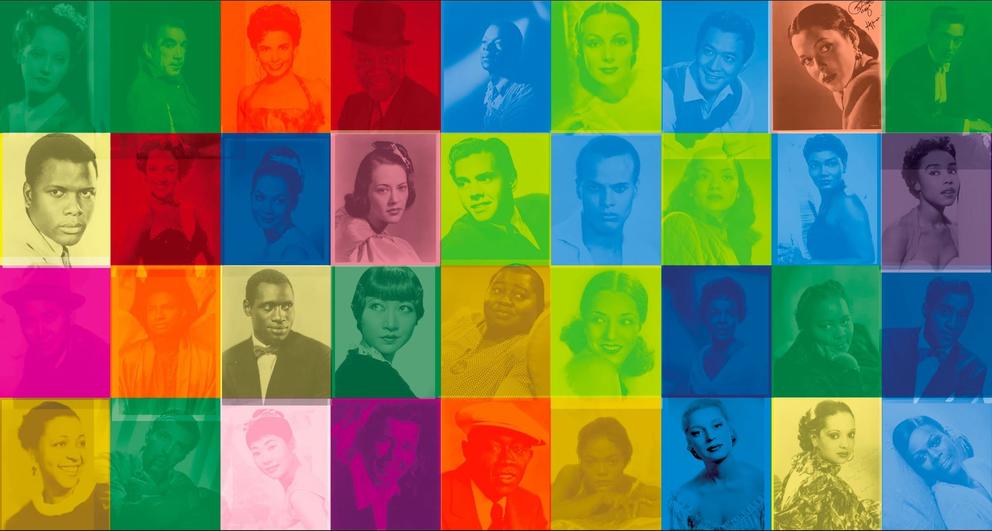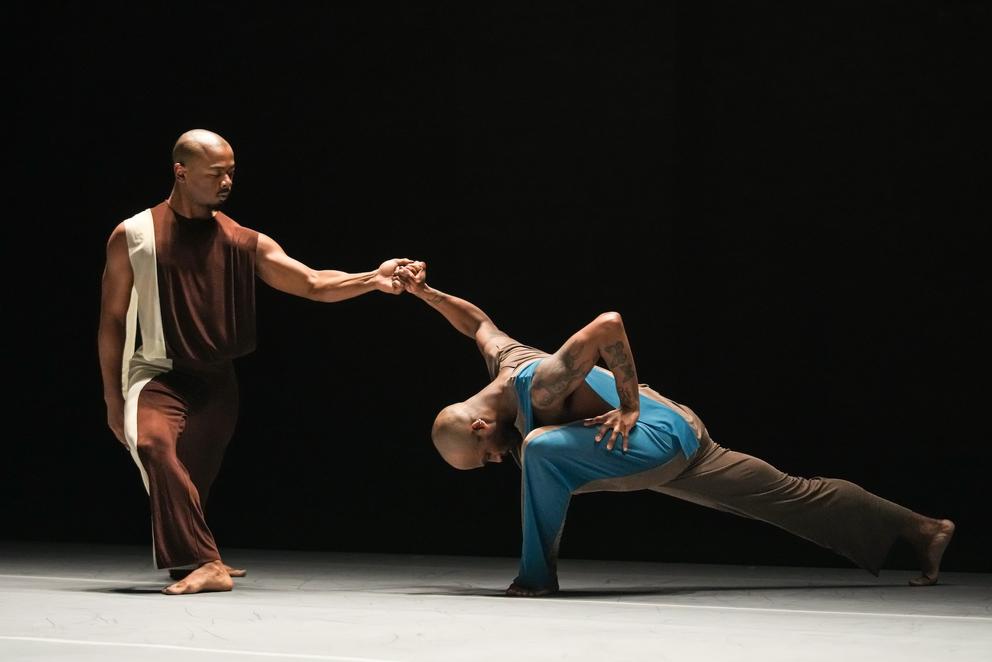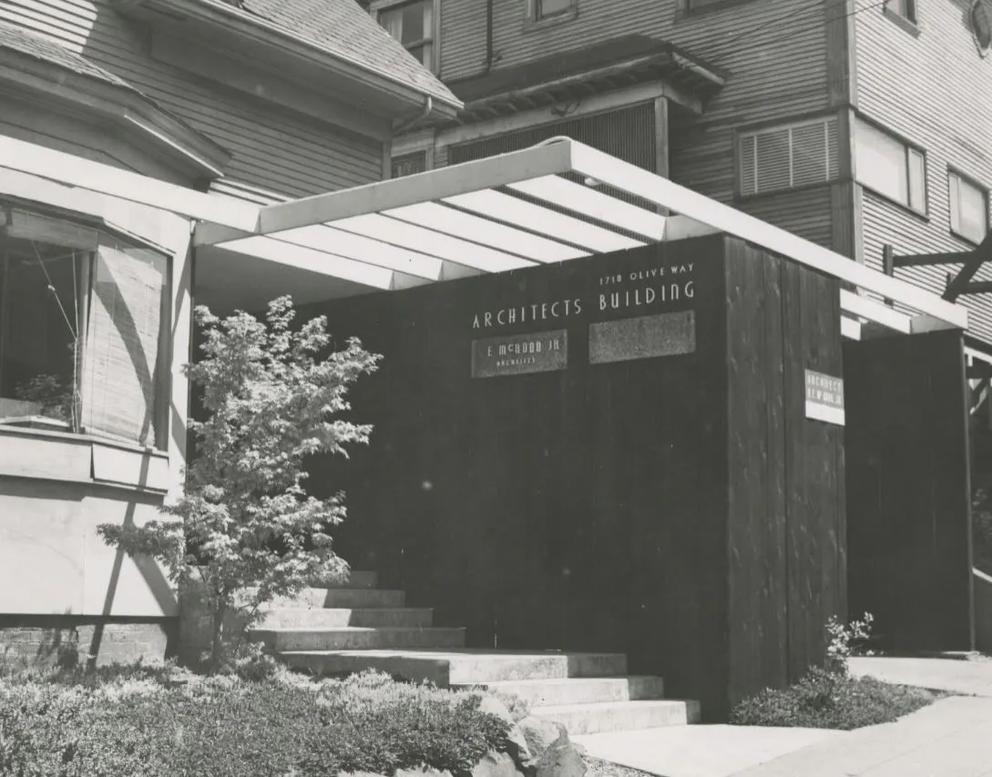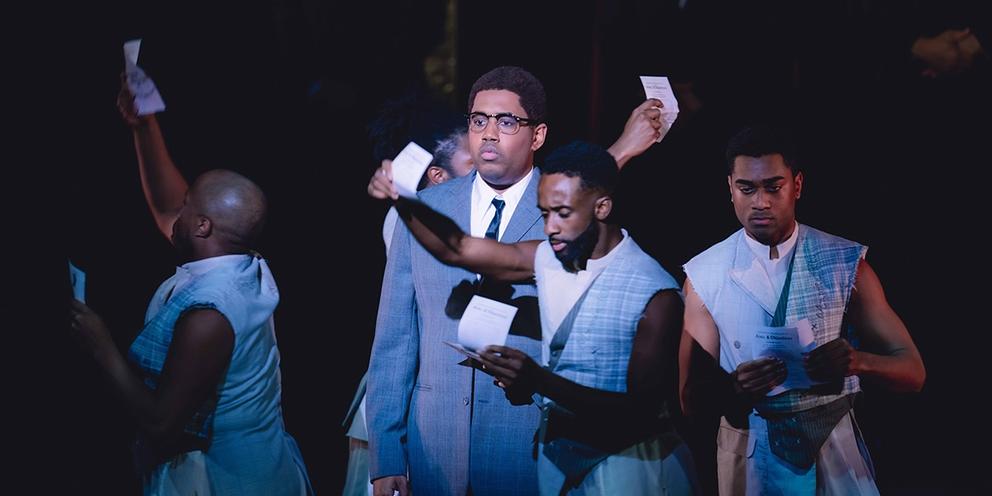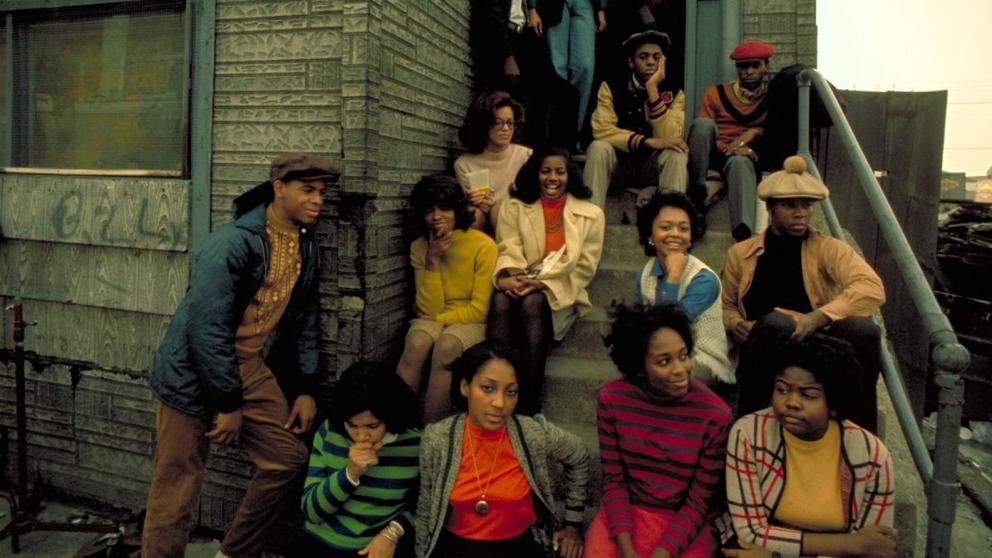In addition to this wealth of current shows, we also recommend perusing Crosscut’s ongoing Black Arts Legacies project, profiling 40 (and counting) Northwest creatives who have made Seattle sing — sometimes literally.
And if you’re reading this on the first day of February, there’s one more way to mark the occasion: tune in to local KEXP radio for Black History is Now, an all-day programming event chronicling influential and essential Black musicians.
MULTIMEDIA
Renowned artist Hank Willis Thomas works in many forms, but is perhaps most widely known for “The Embrace,” a 20-foot-tall bronze sculpture depicting the encircled arms of Rev. Martin Luther King Jr. and Coretta Scott King, which he installed at Boston Common in 2023. While the 90 works in the Henry Art Gallery’s expansive new exhibition Hank Willis Thomas: LOVERULES (Feb. 24 - Aug. 4) may be less physically monumental than “The Embrace,” their combined impact is mighty.
During the course of Thomas’s decades-long practice, the New York-based artist has examined pop-culture tropes in media and advertising, turning them inside out to expose underlying biases and beliefs. In his series Unbranded: Reflections in Black by Corporate America, for example, he removes branding and text from advertising to reveal how African Americans have been delineated and defined in pop culture. (Heads up: artist talk Feb. 24 at 2 p.m.) — B.D.
DANCE
A powerful postmodern melange of muscularity and grace, A.I.M. by Kyle Abraham is making a much-anticipated stop in Seattle (The Moore Theatre, Feb. 21 at 7:30 p.m.). The New York-based choreographer formed his contemporary dance company almost 20 years ago, committed to creating work with an eye toward Black history and culture.
A.I.M. has expanded to present a repertory of work by a mix of choreographers with the same mission. On this visit the group brings five pieces, including two by Abraham: MotorRover, his silent and sometimes funny duet in response to Merce Cunningham’s Landrover; and If We Were a Love Song, an exploration of love set to a suite of music by Nina Simone. — B.D.
SPORTS
Black Hockey History Night is back at the house of Kraken (Climate Pledge Arena, Feb. 26 at 7 p.m.) with a special jersey design by local artist Barry Johnson (profiled in Black Arts Legacies). Johnson says he was inspired by the Colored Hockey League — formed way up in Nova Scotia way back in 1895. Noting that he didn’t want to reinvent the Kraken’s iconic S logo, Johnson instead enlivened it with colors from the Pan-African Flag “to highlight the contributions of Black players throughout the history of hockey,” he said. — B.D.
ARCHITECTURE
The first Black architect registered in Washington state, Benjamin F. McAdoo Jr. was known as much for his appealing mid-century designs as for his commitment to civil rights. (Learn more about him in Crosscut’s Black Arts Legacies profile.)
Sometimes these two passions overlapped in his work — such as his designs for the University of Washington’s Ethnic Cultural Center and the public pool now called the Queen Anne Aquatic Center — the latter of which will be considered for historic landmark nomination on Feb. 1. The UW exhibit Modern Architecture Activism: The Life and Work of Benjamin F. McAdoo Jr. (Gould Gallery in Gould Hall at the University of Washington, Feb. 1 - March 15) will reveal the many ways in which McAdoo changed the Seattle cityscape. — B.D.
OPERA
“A classic tragic hero” is what composer Anthony Davis calls Malcolm X, and that’s what drew him to tell the story of the civil rights leader’s life — from his childhood in Lansing, Mich., to his assassination in Harlem. For X: The Life and Times of Malcolm X (at Seattle Opera Feb. 24 - March 9), Davis set the libretto by his cousin Thulani Davis, based on a storyline by his brother Christopher Davis, to a score of absorbing richness and intensity. Try to imagine what bebop at a gospel church in WWII Vienna might have sounded like, and you might get an idea of Davis’ original score.
The first of his eight operas to date (other titles include Tania, Amistad and The Central Park Five), X premiered in Detroit in 1986 and was given a new staging by Robert O’Hara there in 2022. Seattle Opera is presenting this updated production, surrounding it with a wide range of seminars and other community events. — G.B.
PHOTOGRAPHY
It is a little hard to look at the new show of work by photographer Jon Henry, but bearing witness is precisely the point. In Stranger Fruit (at Photographic Center Northwest through Mar. 10), the Brooklyn-based artist presents portraits of Black mothers holding their sons. The Black youth are alive, but they pose as if deceased, stretched out in frank, full color. The collection calls attention to what continues to be an American reality — the shocking videos, the police trials — and also what the mothers of these lost boys must live with. — B.D.
GOLDEN OLDIES
There’ll be actual Black history onstage at The Paramount this month, when Otis Williams, 82, and Duke Fakir, 88 — founding (and last surviving original) members of, respectively, The Temptations and the Four Tops — perform with the legendary vocal groups’ current lineups (Feb. 10 at 8 p.m.). Williams helped establish the Temptations (a confluence of several earlier groups) in 1960; Fakir’s Four Tops celebrated its 70th – that’s right, 70th – anniversary last year. Along the way both groups helped put Motown at the center of American pop in the ’60s. — G.B.
PAINTING, DRAWING AND COLLAGE
Black artists also abound in visual art shows this month. Here are several of the many vibrant options.
Raised in the Virgin Islands, multimedia artist La Vaughn Belle is inspired by the shards of blue-and-white ceramics — called “Chaney,” a portmanteau of China and money — that regularly washed up on the beaches of her childhood. For Belle, this detritus from the centuries-old transatlantic industry between Denmark and what was formerly known as the Dutch West Indies also symbolizes the slave trade that took place on the same shipping routes. Her collaged paintings in La Vaughn Belle: A History of Unruly Returns (National Nordic Museum through April 7) simultaneously capture and scatter the familiar plate patterns. One piece ridicules colonial consumption with an idyllic island scene painted on a “setting” of paper plates.
There are more artful shards to be found in Positive Fragmentation, which continues its run at Bellevue Arts Museum (through March 10). Among the many striking pieces in this group show of prints by contemporary women are multiple works by prominent Black artists who create with collage both literal and figurative. Look for vibrant mixed-media works by Mickalene Thomas, a stunning wall of reimagined retro advertising by Ellen Gallagher, Wangechi Mutu’s compellingly dissociated faces and Lorna Simpson’s found-and-altered photographs. Not to mention works by Betye Saar and Kara Walker — both of whom root their art in the dark truths of Black American history.
The Central District’s Wa Na Wari is a steady source of art that views Black history through a contemporary lens. The next group show (Feb. 3 - April 20; opening event Feb. 3, 6-8 p.m.) features work by several artists working across the globe. Included is self-taught Renton-based artist Marin Burnett, whose paintings have gained acclaim for their tenderness and glow. For this show she presents She’s Me, portraits of children intended to “remind onlookers that our timeline started well before we passed through your field of vision.” See also the work of Seattle artist DK (Dave Kennedy), whose series This Isn’t Getting Laid offers multiple takes on the meaning of a brick.
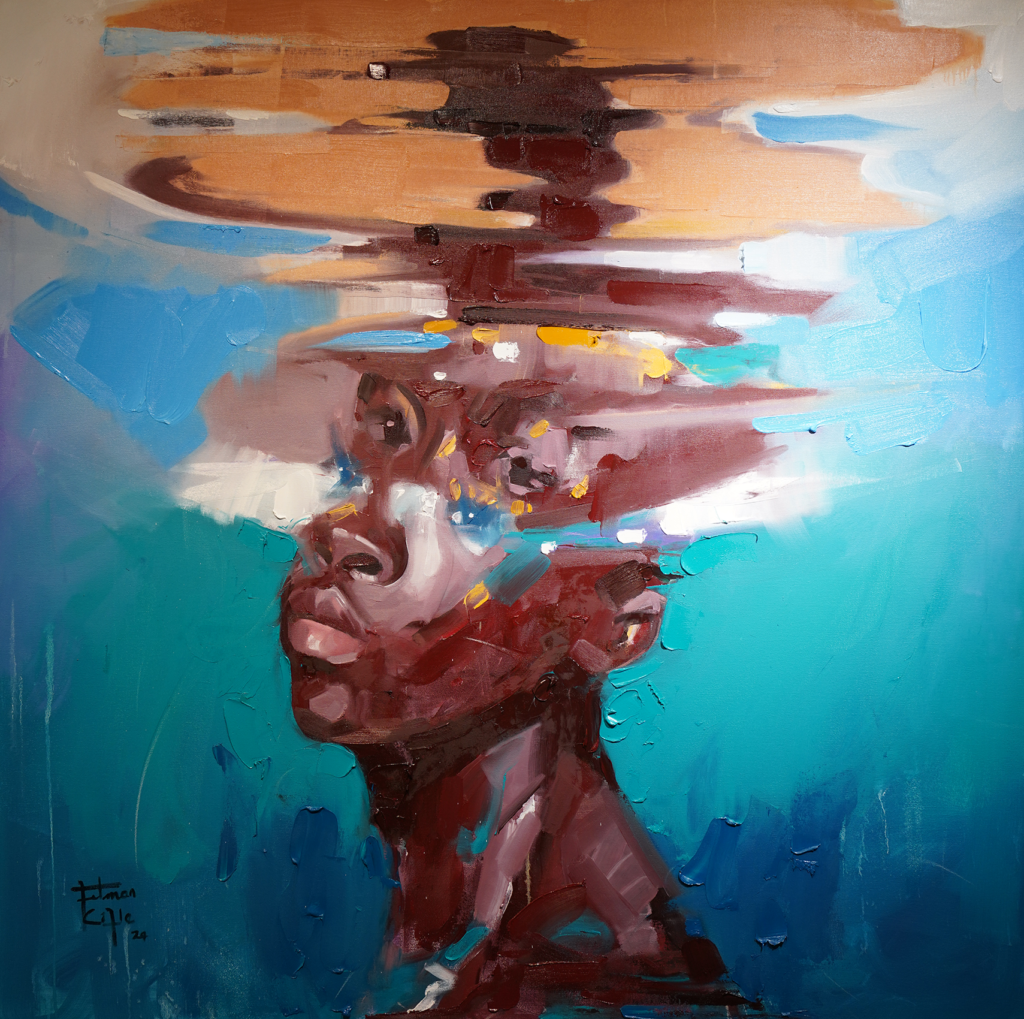
Frederick Holmes and Company in Pioneer Square is celebrating Black History Month with five artists in a show simply called Black (Feb. 1 - March 3). The group exhibits a wide range of styles, including Seattle artist Vincent Keele’s Black history-inspired figurative paintings; Eritrea-born and Seattle-based Filmon Adelehey’s thickly brushstroked portraits of people who appear underwater; and Gary Logan, who combines his Afro-Caribbean descent, gay identity and fondness for scrolls from Asian traditions into textured, abstract paper-pulp works that appear carved from the earth itself.
Travel from Black history into a fantastical Black future with Aramis Hamer’s Once Upon a Spacetime (at Arte Noir through May 5). The Seattle artist shares her hyper-colored, cosmic visions of the feminine spirit in space — whether inhabiting a blue body that’s lounging under a rainbow sky, or a purple goddess brandishing the scales of justice. Several of these far-out figures have Saturn-like rings around their heads, suggesting a planet-sized power. — B.D.
FILM
At Cooley High, near Chicago’s Cabrini-Green housing project, it’s the end of the school year, 1964, and various restless seniors are out and about looking for diversion. (So that’s where Dazed and Confused got the idea.) But what happens in Michael Schultz’s groundbreaking, greatly influential 1975 film, is far more tragic than being squirted with mustard.
It’s one of several Black American-themed works — amounting to something of a mini film festival — showing this month at Northwest Film Forum (Feb. 1 - March 3; see links for date runs of each film). Also on the docket: 1990’s To Sleep With Anger, directed by Charles Burnett and starring Danny Glover (Feb. 8 screening hosted by The Stranger’s Charles Mudede); Tales From the Hood (Rusty Cundieff, 1995), four interlocking horror fables; and The African Desperate, Martine Syms’ 2022 satire about a Black student navigating a white art world.
Meanwhile, the Grand Illusion is presenting another Charles Burnett offering, My Brother’s Wedding (Feb. 2 - 7), a drama he finally finished to his satisfaction in 2007 after a premature 1983 studio-enforced rollout; and Occupied City, a four-hour-plus doc about WWII Amsterdam by Steve McQueen (Best Director and Best Picture winner for 20 Years a Slave). — G.B.
Get more Black Arts Legacies
This newsletter features a new artist each week, along with additional stories, exclusive content and responses to reader questions.

